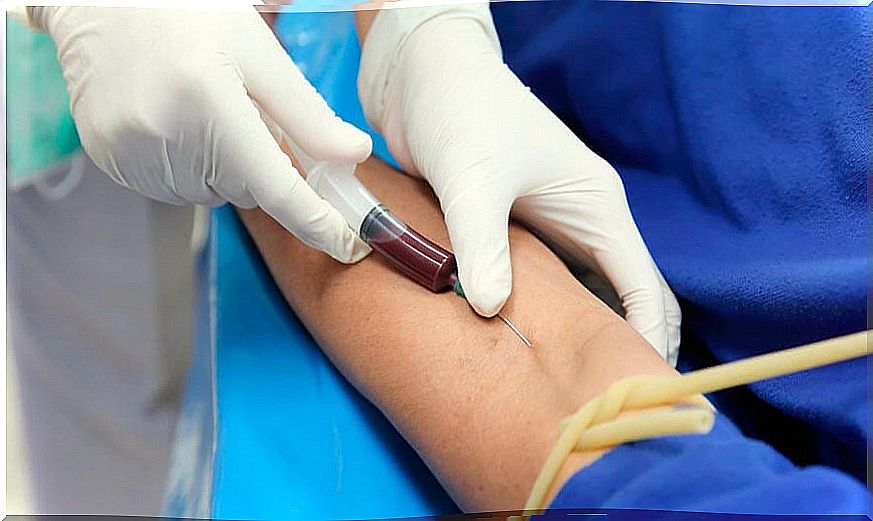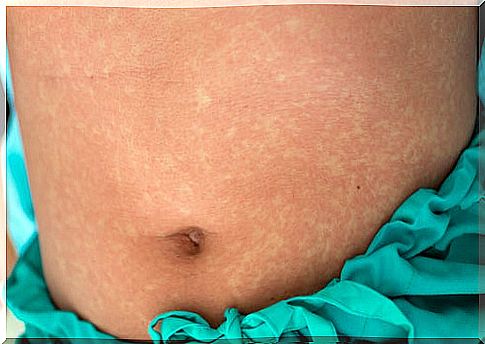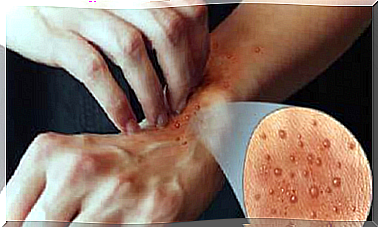What Is A Fixed Drug Rash?
Fixed drug exanthema (FMS) is a special form of relatively common toxic derma. It is usually characterized by the appearance of skin lesions. These lesions appear as red or purplish spots as a result of oral administration of a drug.
Likewise, the lesions disappear when the treatment that causes them is suspended. However, they will reappear with re-administration of the substance that causes them. When the lesions are multiple, the disorder is known as a generalized fixed drug eruption.
The mechanism by which this toxicoderma occurs depends on a phenomenon of autoimmunity against the cells of the superficial layer of the skin (keratinocytes). In other words, an error occurs whereby the body’s defenses attack these cells. In addition, the areas where these lesions appear most frequently are the hands, feet, lips and genitals.
Symptoms
The characteristic symptom of a fixed drug rash is the appearance of skin lesions. Thus, the most typical lesion is a rounded or oval spot (macula), with well-defined margins. The size of this macula can vary from a few millimeters to 20 centimeters.
Initially, the spots acquire a reddish or purplish color and are generally asymptomatic. However, it may be the case that they are itchy or cause a burning sensation. Within a few hours of exposure to the drug, the lesion becomes edematous (swollen) and forms a plaque.
The spot transformed into plaque can evolve into a blister and then erosion. Eroded lesions are very painful for the person who suffers them, especially if they are located in the genital or oral mucosa.
After healing, post- inflammatory hyperpigmentation of a dark or even violet tone remains as a sequel. In addition, it is very common for the lesions to be solitary, although it may be the case that they are multiple with a random distribution.
Diagnosis
The diagnosis of this toxicoderma is fundamentally clinical. This means that it is based on the medical history with the history of administration of a certain medication or drug.

On the other hand, a physical examination can be performed with a description of the skin lesion. However, since it is often difficult to find the exact substance that has caused the disease, complementary tests are used. These complementary tests are:
- Skin biopsy.
- Exposure to the suspected substance through skin patches or contact tests.
- Blood test.
- Oral provocation test . It consists of observing if lesions occur after administering the drug orally. This test, although useful in determining what is causing the disorder, is contraindicated in cases of fixed generalized rash.
- Differential diagnosis : consists of determining if it is EFM from the exclusion of other possible causes that present a similar clinical picture. Among the possible processes with similar symptoms also caused by drugs are: Stevens-Johnson syndrome and toxic epidermal necrolysis.
It should be taken into account that, along with these tests, it is essential to know the relationship between the appearance of the disorder and the medication used.
Treatment of fixed drug rash
When treating this disorder, the essential thing is to withdraw the drug that caused it. From there, we can differentiate between the treatment of non-eroded and eroded lesions. Non-eroded lesions can be treated with topically applied corticosteroid-type anti – inflammatories. Likewise, antihistamines may be indicated to treat the itching that occurs.
On the other hand, it is important to avoid infection of eroded lesions with a topical antibiotic. Post-inflammatory hyperpigmentation can persist for months or even years. This is because there is little response to treatment with depigmentation agents.
Can fixed drug rash be prevented?

Prevention of this disorder is not always possible. However, an early diagnosis allows you to act quickly by withdrawing the drug and facilitating a quick recovery.








